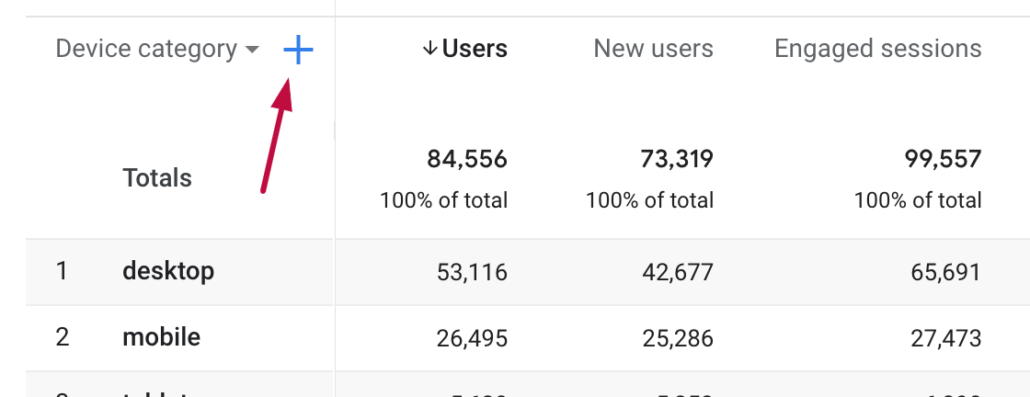Enhance Your Data Analysis Using Additional Dimension in Google Analytics
Exploring the capabilities of additional dimensions in Google Analytics opens a realm of opportunities for refining data analysis. The capability to study details better past the surface area degree provides a nuanced view that can shape critical decisions. By layering additional measurements onto key data collections, an even more elaborate story arises, clarifying user communications and performance indicators. This vibrant technique to information exam holds the crucial to unlocking hidden patterns and trends that can transform how businesses interpret their electronic footprint.
Comprehending Secondary Measurements
Additional measurements in Google Analytics refer to added criteria that can be included to the primary dimension, enabling for a more in-depth analysis of information (Secondary Dimension in Google Analytics). By incorporating additional measurements, experts can sector and filter information to uncover patterns, patterns, and relationships that could not be noticeable when looking at the data as a whole.

Advantages of Making Use Of Additional Measurements
When examining data in Google Analytics, the use of secondary dimensions supplies vital insights right into customer behavior and efficiency metrics. By adding an additional dimension to your key data, you can dig deeper right into the features of your internet site site visitors and their communications. One of the vital benefits of using second measurements is the capability to segment and contrast data much more successfully. This segmentation permits you to comprehend just how various variables, such as demographics or traffic resources, impact individual habits and conversions (Secondary Dimension in Google Analytics).
In addition, additional dimensions improve the context of your main information, supplying an extra extensive sight of individual interaction and performance metrics. On the whole, the use of second measurements in Google Analytics can dramatically improve the depth and high quality of your data evaluation, leading to more informed decision-making and improved end results.
Exactly How to Add Secondary Measurements
By including secondary dimensions in Google Analytics, individuals can get much deeper understandings right into their information analysis process, enabling for even more extensive analysis of user behavior and efficiency metrics. Adding additional dimensions is an uncomplicated process that can substantially enhance the depth of analysis. When in the record, locate the "Secondary dimension" tab over the data table.
Studying Information With Secondary Dimensions
Using second dimensions in information analysis supplies a much more detailed understanding of individual behavior and performance metrics. By adding a secondary dimension to your primary data embeded in Google Analytics, you can dig deeper into the features of your website site visitors and their communications. For example, integrating the main dimension of 'source/medium' with the secondary measurement of 'touchdown web page' can expose which particular web pages are bring in website traffic from various sources, aiding you maximize these pages for better engagement.

Fundamentally, assessing data with second measurements encourages you to acquire beneficial understandings into customer habits, recognize fads, and make educated decisions to boost the performance of your electronic properties.
Ideal Practices for Additional Measurements
In data evaluation, integrating secondary measurements properly can significantly enhance the depth of understandings stemmed from metrics and individual behavior patterns. When using second dimensions in Google Analytics or any other logical tool, it is essential to stick to finest techniques to guarantee the precision and relevance of the data evaluation.
One secret ideal technique is to very carefully select additional measurements that complement the key dimension being examined. Picking secondary dimensions that supply additional context or additional division can provide a more detailed understanding of the information. It is additionally necessary to stay clear of overcomplicating the analysis by including way too many secondary measurements, which might lead to confusion or dilution of insights.
Additionally, it is advisable to explore different mixes of second and main dimensions to reveal brand-new correlations and trends. Regularly examining and improving the option of secondary dimensions based on the certain objectives of the analysis can lead to more workable understandings. By following these finest techniques, useful link information experts can utilize secondary measurements efficiently to improve the overall data evaluation procedure and decision-making abilities.

Verdict
In conclusion, integrating additional measurements in Google Analytics is important for an extensive data evaluation technique. By leveraging second measurements along with main ones, analysts and marketers can reveal valuable insights and relationships that can notify decision-making and maximize electronic marketing strategies. Comprehending exactly how to properly make use of secondary measurements and adhering to ideal practices will certainly enable professionals to remove meaningful data and enhance their general efficiency metrics.
Second measurements in Google Analytics refer to extra parameters that can be added to the primary dimension, allowing for an extra in-depth analysis of data. By integrating second dimensions, analysts can sector and filter information to discover patterns, trends, and correlations that may not be evident when looking at the information as a whole. Incorporating the main measurement of 'source/medium' with the additional measurement of 'touchdown page' can disclose which particular pages are drawing in traffic from various sources, aiding you enhance these pages for better interaction.
One key ideal method is to carefully select second dimensions that enhance the main dimension being assessed. By following these ideal more methods, data analysts can take advantage of secondary measurements successfully to improve the general information analysis process and decision-making capabilities.
 Ralph Macchio Then & Now!
Ralph Macchio Then & Now! Kirk Cameron Then & Now!
Kirk Cameron Then & Now! Andrea Barber Then & Now!
Andrea Barber Then & Now! Danny Pintauro Then & Now!
Danny Pintauro Then & Now! Dolly Parton Then & Now!
Dolly Parton Then & Now!